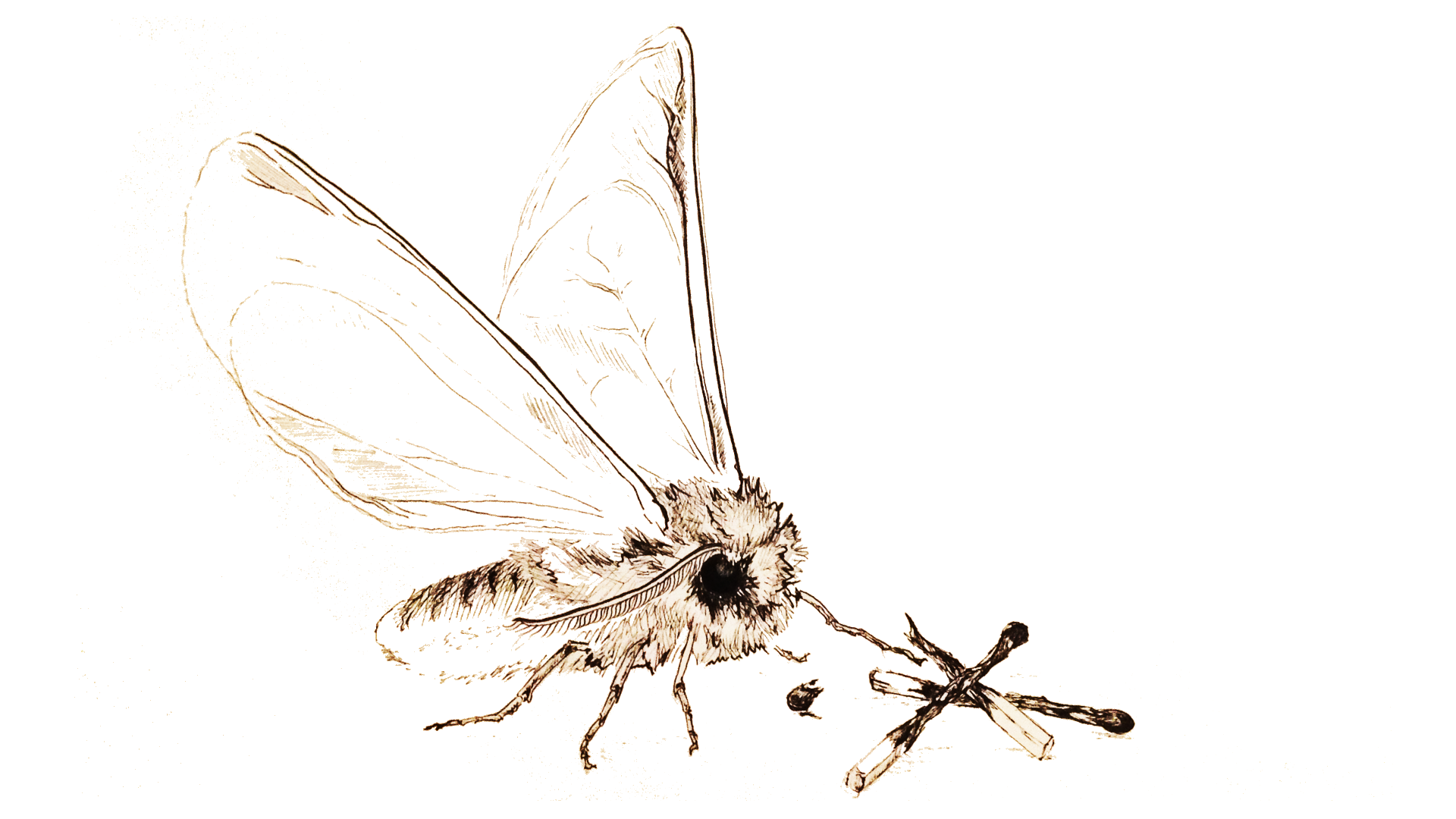Fatal attraction in nature occurs where an animals’ attraction for something is detrimental for its survival. The popular moth-and-lamp memes encapsulate one such example. While these may just seem entertaining, there are problems associated with these kinds of phenomena when they are driven by human activity. The moths’ attraction to lamps is harmful for them and is a by-product of their adaptation to follow moonlight as a way of navigating. Individuals with the greatest attraction suffer the most, since they waste energy and miss out on invaluable feeding time. In urban areas, natural selection has resulted in changes within moth populations, and there is now a higher proportion of moths with a reduced attraction to artificial lights. Our impact on nature is both rapid and extensive, which can hinder the ability of organisms to cope, as is seen in marine animals such as turtles and seabirds who ingest plastic rubbish which they mistake for food. The plastic can end up choking them or accumulating in the stomach, both of which are fatal.
“Under natural conditions, fatal attraction is usually the result of “aggressive mimicry.”
Under natural conditions, fatal attraction is usually the result of “aggressive mimicry”, whereby a predatory species evolves to mimic something harmless or even beneficial so as to lure unsuspecting prey to its proximity. This is often associated with low energy usage since there is little need to go in search of prey. Angler fish mimic small bioluminescent organisms using a light emitting appendage, known as an esca, to attract prey in search of food. The alligator snapping turtle has a tongue shaped and coloured like a worm, which it wiggles to lure fish into its open mouth as it remains immobile in murky water.
In each of these cases, the prey’s attraction for what is being mimicked originates from adaptive traits which give a selective advantage overall. Retention of the traits is therefore, on the whole, more advantageous than their loss would be. Evolution never provides a perfect solution. Instead, the costs and benefits of a trait result in its persistence, alteration, or disappearance within a population. If the selective pressures were to be strong enough, an evolutionary arms race could take place, over successive generations, with organisms on both sides undergoing natural selection to counter each others’ adaptations. For example, prey could evolve to have a keener sense of sight or smell to help it detect a mimic, driving a selective advantage in the predator to have an improved mimicking capacity.
“Carnivorous plants, like the venus flytrap and pitcher plants, derive supplementary nutrients from animal tissue.”
It’s not only animals that take advantage of aggressive mimicry. Carnivorous plants, like the venus flytrap and pitcher plants, derive supplementary nutrients from animal tissue and have adaptations which attract animals to come into contact with them, only to become trapped and digested. They often use nectar, UV colouration, and chemical scents to attract unsuspecting prey, who mistake it for a flower. An affinity for each of these features is central to the survival of pollinating insects in particular, so its benefits greatly outweigh the costs associated with mimics.
Perhaps, one of the most interesting examples of fatal attraction is one that is not the result of aggressive mimicry. A microbial parasite that causes toxoplasmosis in humans manipulates the behaviour of infected rodents, causing them to lose their fear of cats, and greatly increasing the risk of predation. By doing so, the parasite increases its chances of infecting cats, the definitive hosts within which it can reproduce and propagate and directly benefit its evolutionary fitness. This parasite can also infect humans, where it can even have serious effects in the early stages of development.
Ultimately, fatal attractions make for interesting interactions in the natural world and understanding them is vital to shining a light, or in the case of moths, a lamp on how evolution operates.






